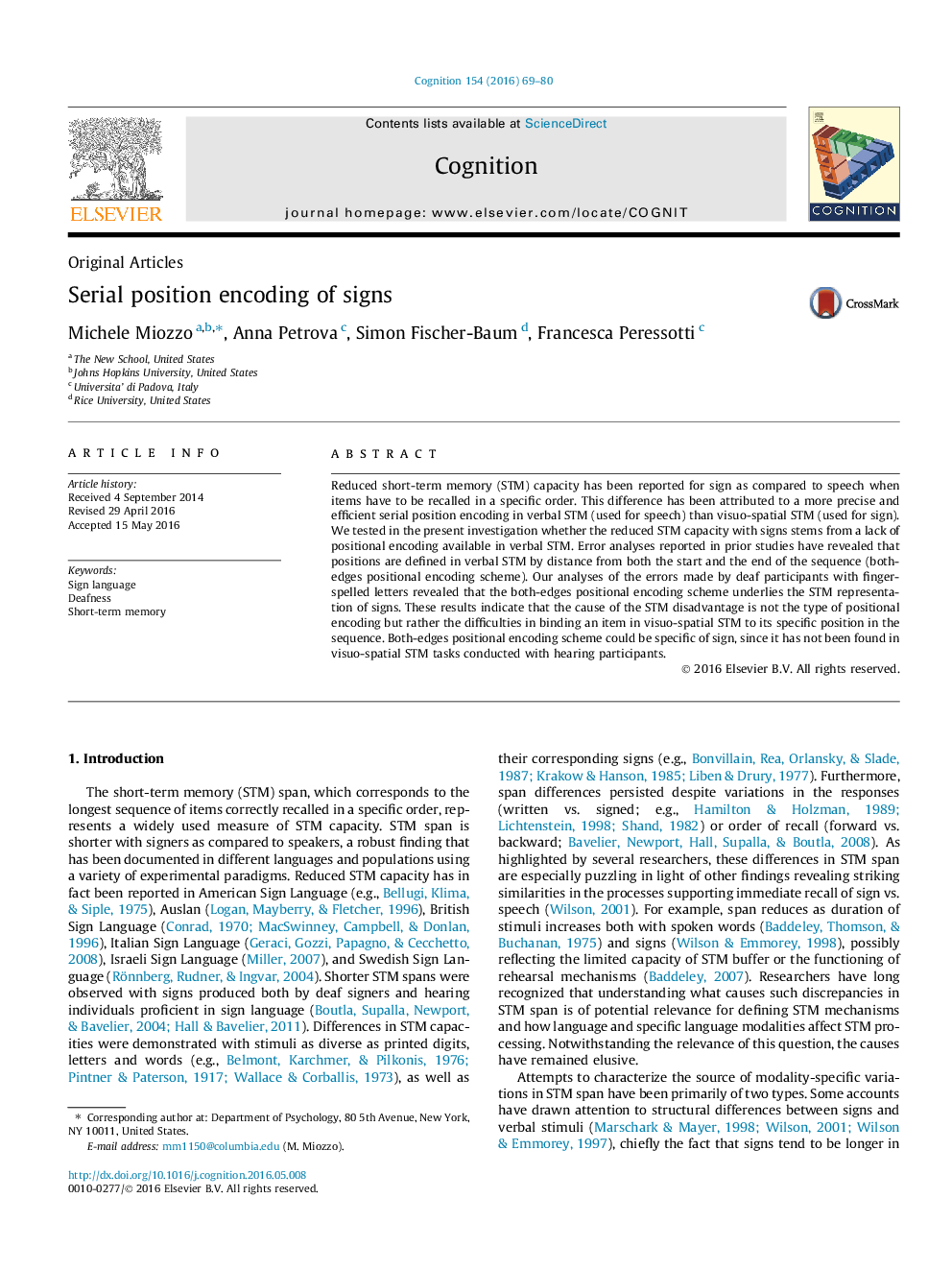| Article ID | Journal | Published Year | Pages | File Type |
|---|---|---|---|---|
| 7285899 | Cognition | 2016 | 12 Pages |
Abstract
Reduced short-term memory (STM) capacity has been reported for sign as compared to speech when items have to be recalled in a specific order. This difference has been attributed to a more precise and efficient serial position encoding in verbal STM (used for speech) than visuo-spatial STM (used for sign). We tested in the present investigation whether the reduced STM capacity with signs stems from a lack of positional encoding available in verbal STM. Error analyses reported in prior studies have revealed that positions are defined in verbal STM by distance from both the start and the end of the sequence (both-edges positional encoding scheme). Our analyses of the errors made by deaf participants with finger-spelled letters revealed that the both-edges positional encoding scheme underlies the STM representation of signs. These results indicate that the cause of the STM disadvantage is not the type of positional encoding but rather the difficulties in binding an item in visuo-spatial STM to its specific position in the sequence. Both-edges positional encoding scheme could be specific of sign, since it has not been found in visuo-spatial STM tasks conducted with hearing participants.
Related Topics
Life Sciences
Neuroscience
Cognitive Neuroscience
Authors
Michele Miozzo, Anna Petrova, Simon Fischer-Baum, Francesca Peressotti,
